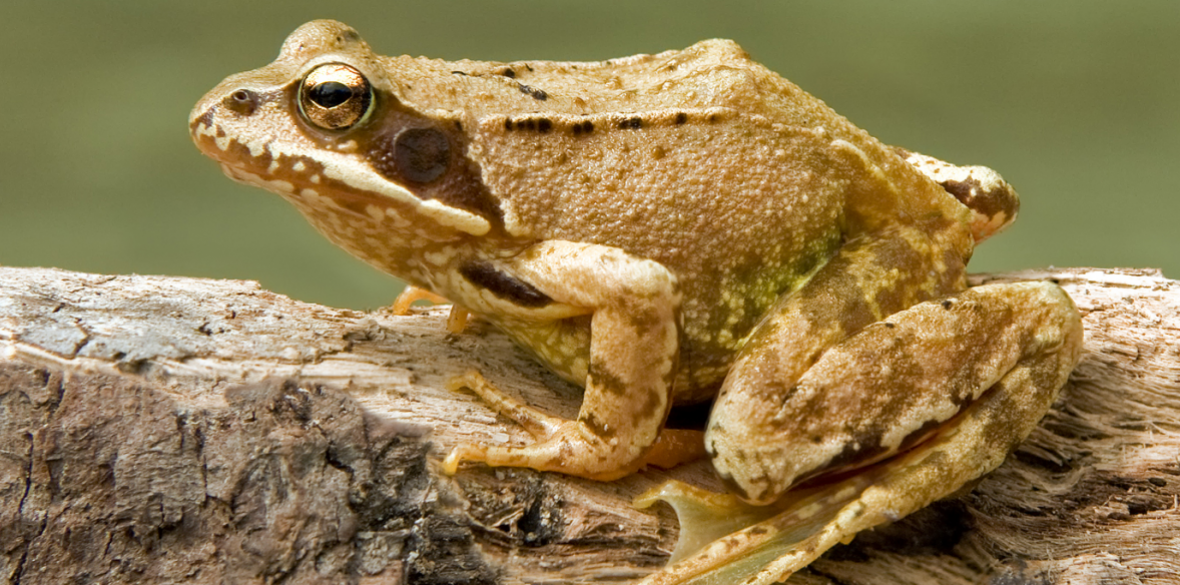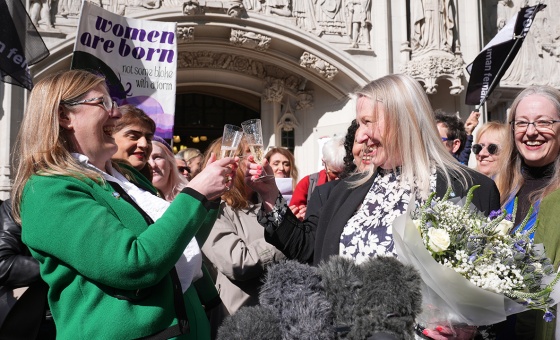This is the last article you can read this month
You can read more article this month
You can read more articles this month
Sorry your limit is up for this month
Reset on:
Please help support the Morning Star by subscribing here
ANYBODY concerned about our countryside and the creatures that live in it will be particularly worried our native amphibians. Britain doesn’t have too many frogs, toads and newts and it certainly can’t afford to lose any more.
The common frog (Rana temporaria) lays spawn by March in most parts of the country. The large masses of jelly and black eggs are easy to spot.
Toads and newts have eggs too but are harder to find in smaller ribbons or even folded neatly into the leaves of aquatic plants.
Meet Rachel, her partner Paul and children Wilf, 11, and Lucas, 8. I met them early last summer on the nature reserve on the water meadows outside Towcester in Northamptonshire.
This is perfect frog, toad and newt habitat with lots of clean streams and marshy pools. Once the two boys had spotted their first tiny froglet, freshly emerged from the water and hopping through the long grass, they started to spot hundreds of them.
“Why are there so many?” asked Lucas. Mum Rachel explained that a single female common frog will lay anything from 1,000 to 2,000 eggs.
The eggs are laid in a mass of jelly and eggs called spawn. Many of those eggs are eaten by fish, amphibians and even birds. Because there are so many there are still plenty to turn into tadpoles which are also popular food for all those pond predators.
Some tadpoles make it to become froglets and scramble on to dry land where they become food for even more predators, including the exciting grass snake (Natrix natrix).
Amazingly of that 1,000 or 2,000 frog’s eggs only very few make it to adulthood. It takes about three years for frogs to go from egg to breeding adults when they start the whole exciting life and death cycle all over again.
The common toad (Bufo bufo) has a similar cycle but they start with between 3,000 and 6,000 eggs and the entire cycle takes four years.
Toad numbers have crashed by more than two thirds over 30 years and by nearly a third just since 2014. Sightings of frogs have dropped by 17 per cent over the same period.
The causes are, as always, many and varied but loss of small ponds in gardens is certainly a very important one. Lucas and Wilf were delighted to tell me they had built a small nature pond in their garden.
They were populating theirs with native British plants and pond snails. Discussions about fish and particularly goldfish are still going on but a recent visit by a shimmering electric blue dragonfly had already convinced them all that their new pond will be a great addition to the garden.
No doubt frogs, toads, newts and other creatures will soon be making a home in or near the new pond and hopefully laying their eggs. Wilf and Lucas can hardly wait
Creating a small pond in your garden is something you could do too. It can be as simple using a washing-up bowl or even an upside-down dustbin lid — not elegant but the frogs won’t complain.
Making a nicer small pond is really quick and easy. A 1m by 1m pond can take less than a couple of hours to build. Obviously the larger the pond, the longer it will take you.
Before picking up a spade, pick up pencil and paper to sketch out a rough plan. Avoid geometric shapes, going instead for a gently curved natural-looking outline.
Once you’re happy with the shape, mark out the pond with a line of sand. Choose a spot that is in light shade — some sunlight will help plants to grow, but too much will promote algae.
The pond should be about 90cm deep in the centre to give creatures a place to shelter over winter. Create a flat shelf (30cm wide and 30cm deep) for standing plants on around part of the perimeter, leaving the rest gently sloping. Avoid steep sides.
Remove any protruding stones and cover the bottom of the hole with a layer of sand, underlay or old carpet to prevent sharp stones piercing the lining.
Now lay the flexible butyl or rubber liner. To work out how much you need, double the maximum depth of the pool, then add this to the length of the pool to find the total length of liner needed. Now add double the maximum depth to the width to give the total width of liner needed.
Carefully place the liner over the hole and push it into place, smoothing out what folds you can.
Slowly fill the pond with water. Rain water is best as tap water is very high in nutrients that can cause algae. Cut off the excess liner, leaving about 15cm all around the outside. This edge can then be buried under soil, or covered with pieces of turf or stones.
Make a pebbly beach on the gently sloping sides with a selection of large and small pebbles, and gravel. Aim to build an amphibian friendly ramp with the stones from the outside to the floor of the pond.
Carefully select plants, buy nursery grown or other pond owners often have spares to give away. Don’t take them from the wild. Include as many British native pond plants as you can, there is a wide range available, and many of them are both attractive and beneficial for wildlife.
Nurseries will provide information about how deep the plants should go. To keep the water healthy you will need a mix of submerged oxygenators, floating aquatics, deep-water aquatics and marginal plants.
I’ll finish with a family story of my own, my daughter-in-law Jane has been plagued by illegal immigrants next door.
They are midwife toads (Alytes obstetricans) in a neighbour’s garden pond. These toads have spread to parts of Bedfordshire and Northamptonshire since a local nursery imported them from France around 1900. They arrived in clumps of water plants.
They are tiny, only about half the size of our native toad but seem to really enjoy our climate and gardens. The females lay their eggs in chains and the males wrap the strings of egg around their back legs to keep them safe — hence their midwife toad name.
Why have they suddenly become a nuisance? The males have a very loud mating call which sounds exactly like an iPhone bleep, causing much confusion and disturbance throughout the night.











